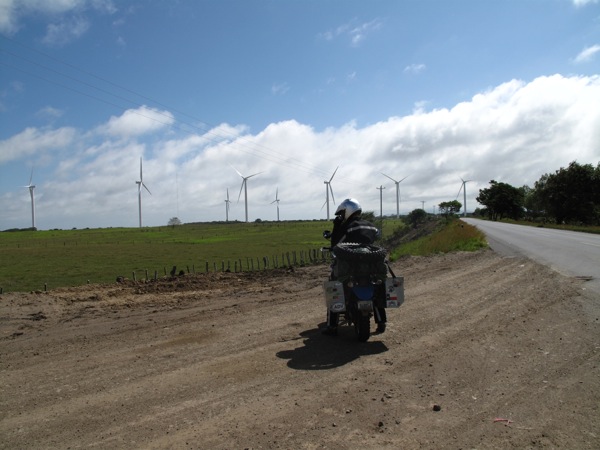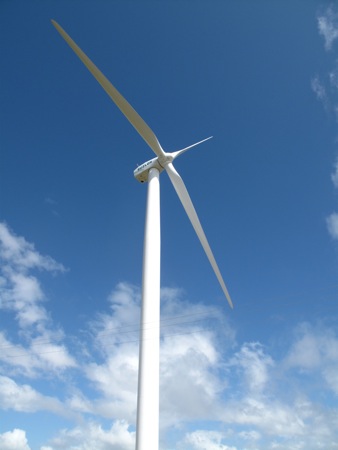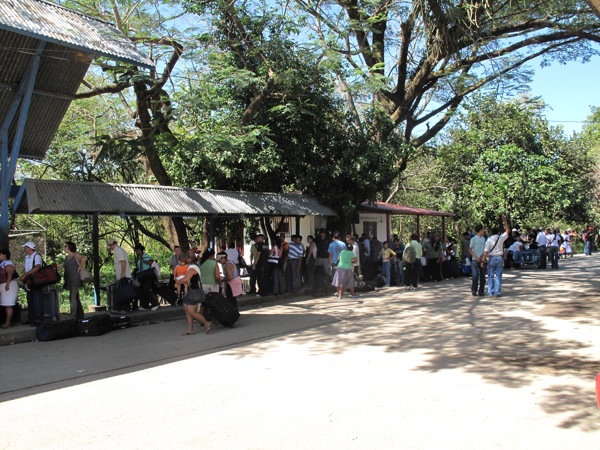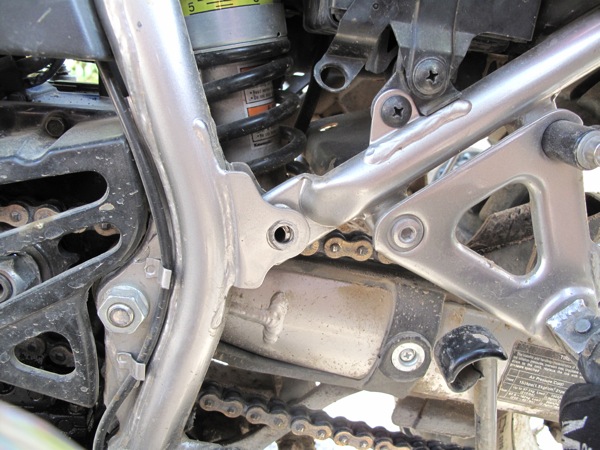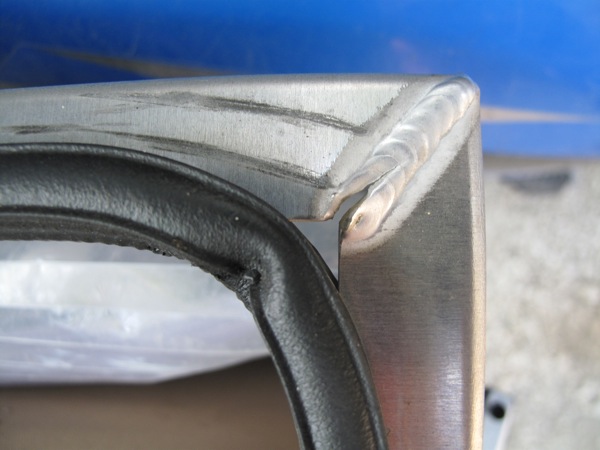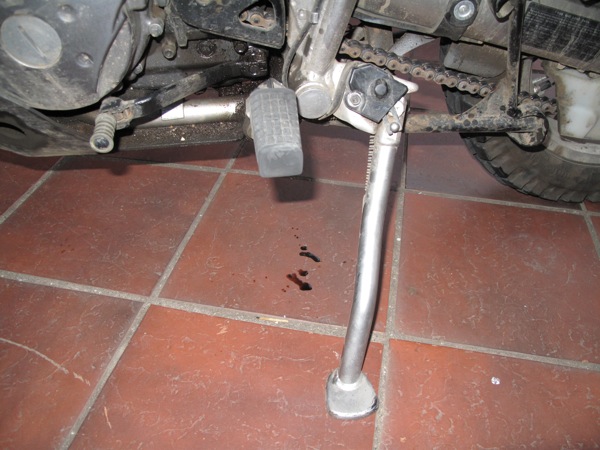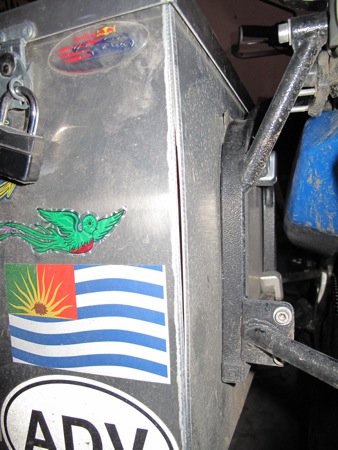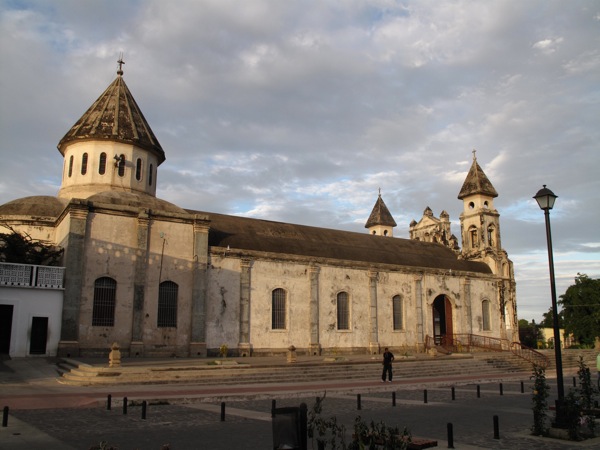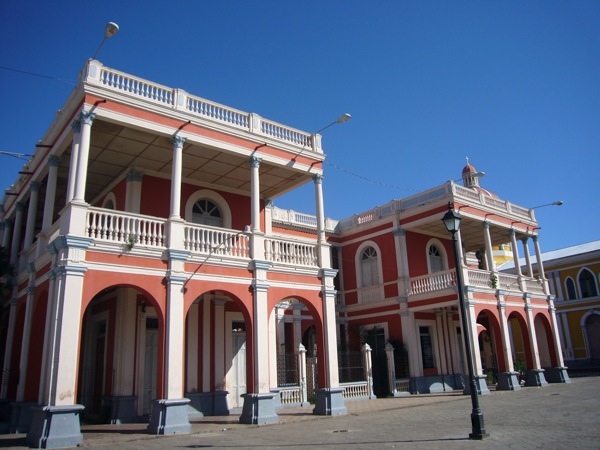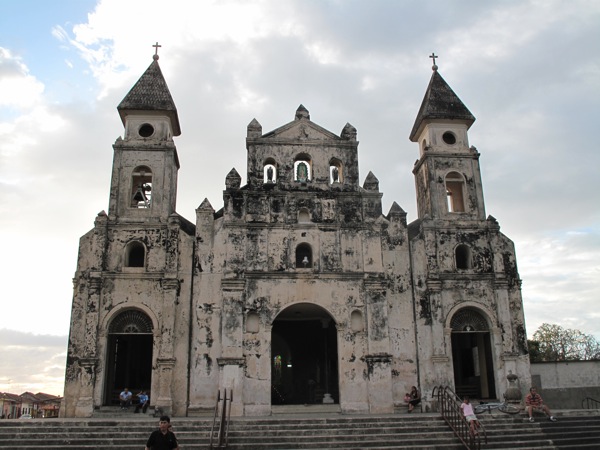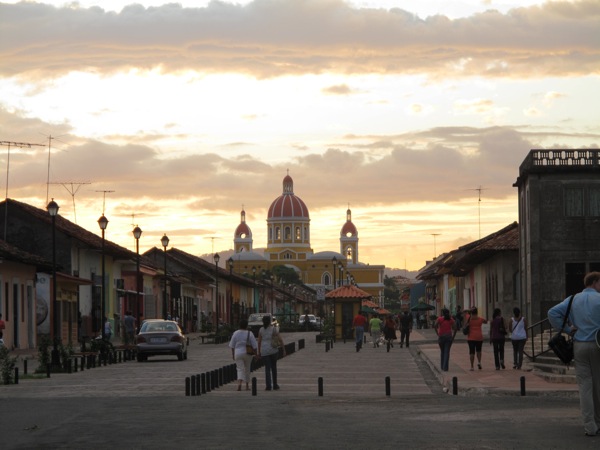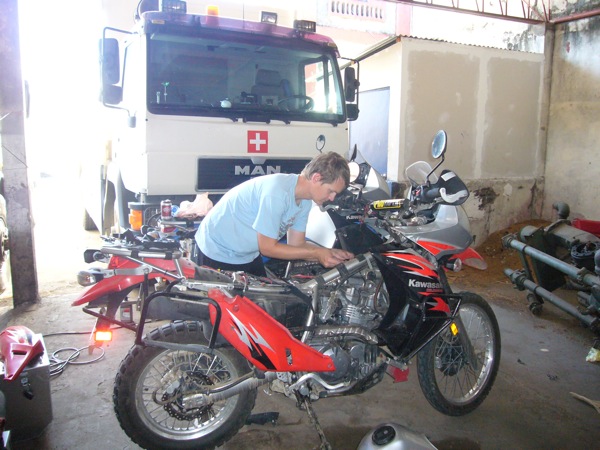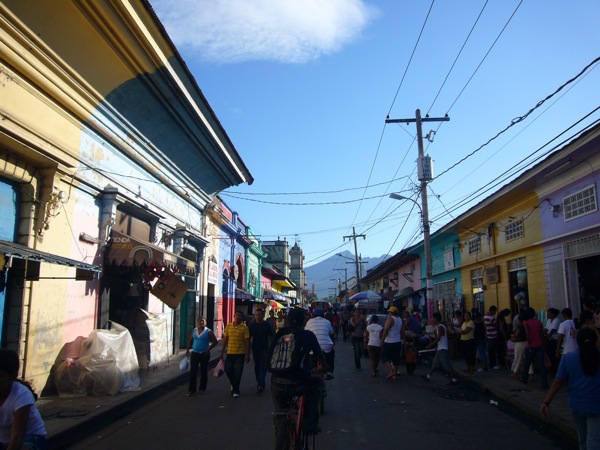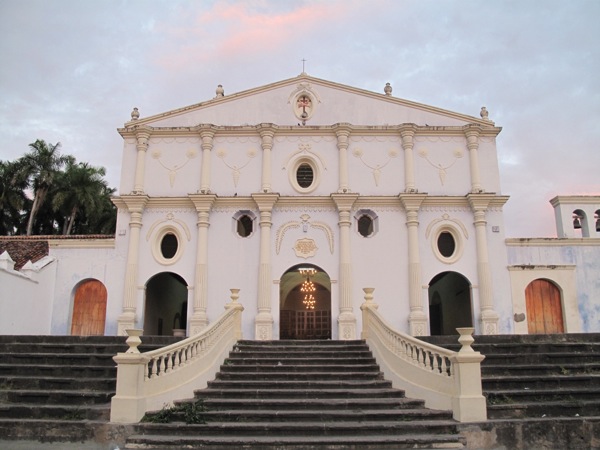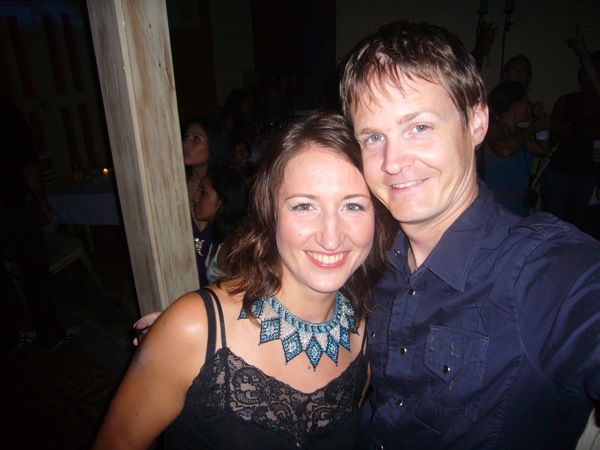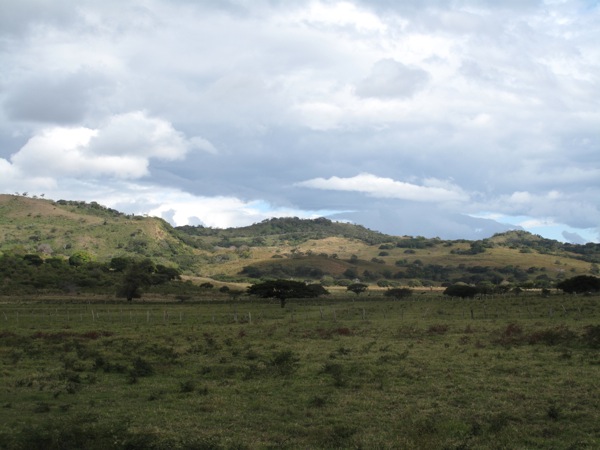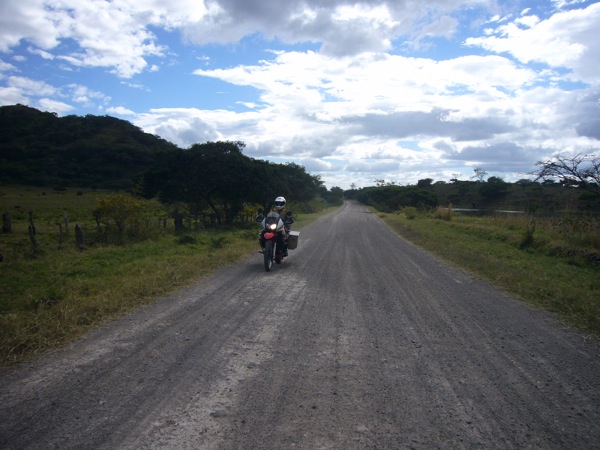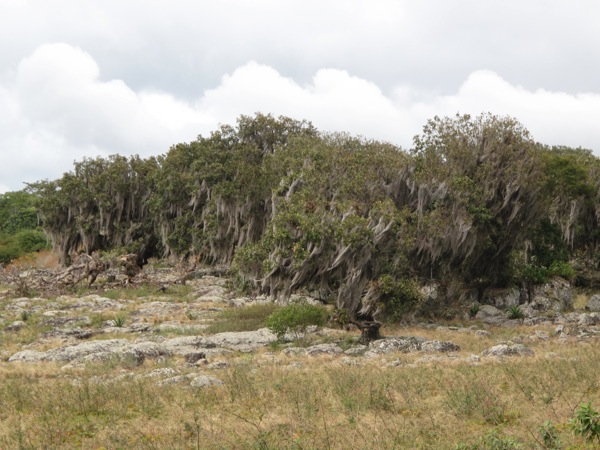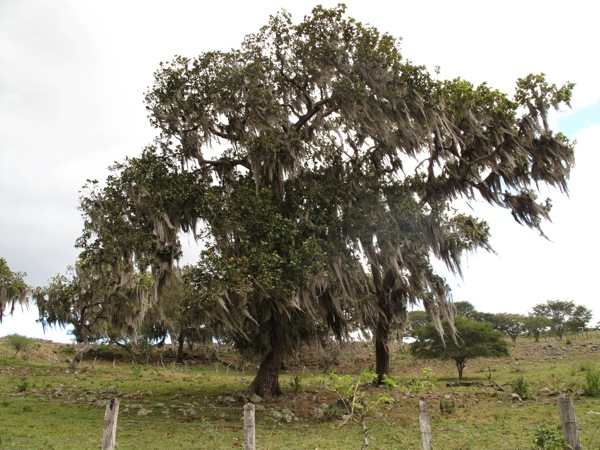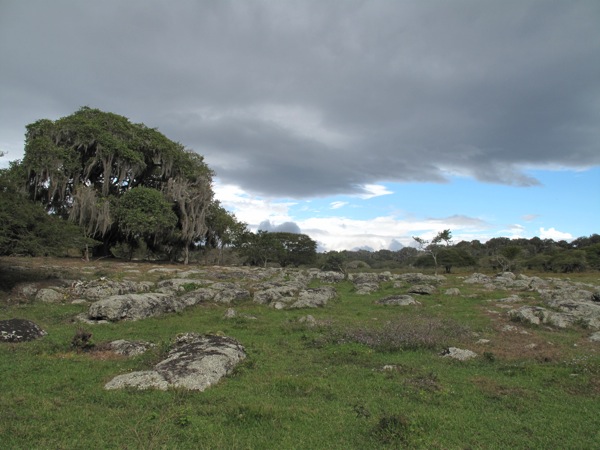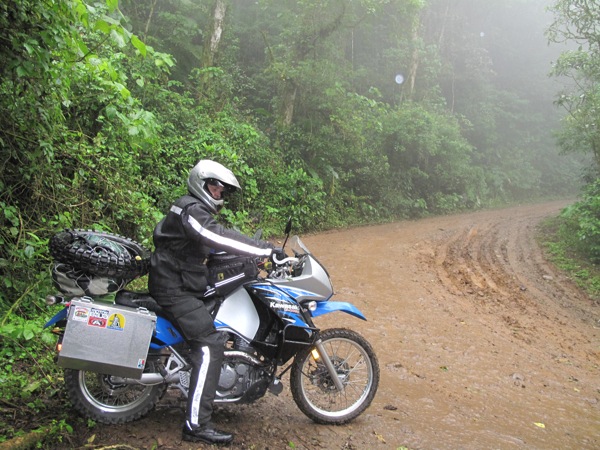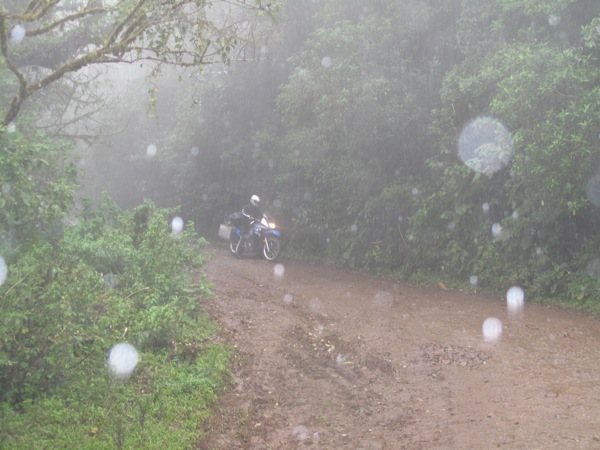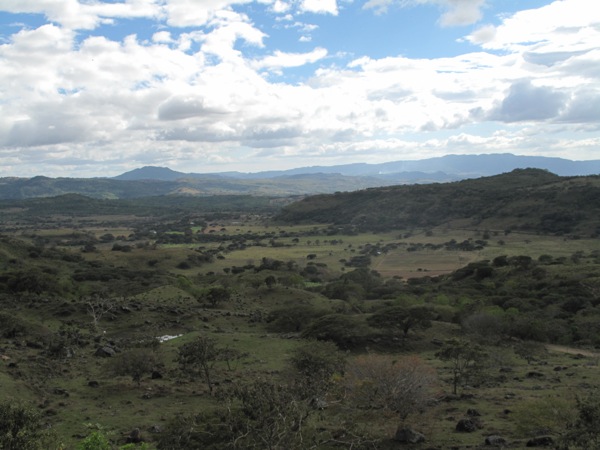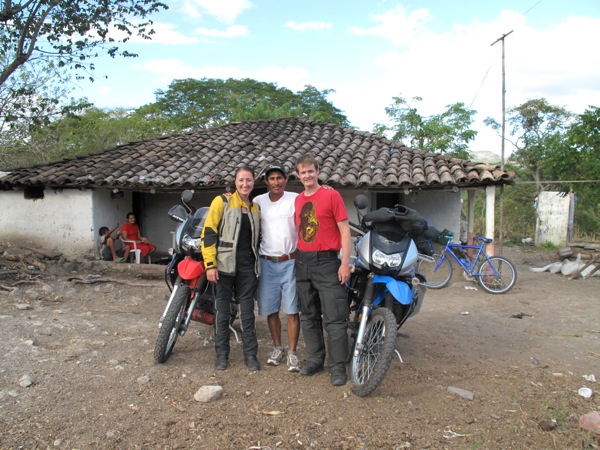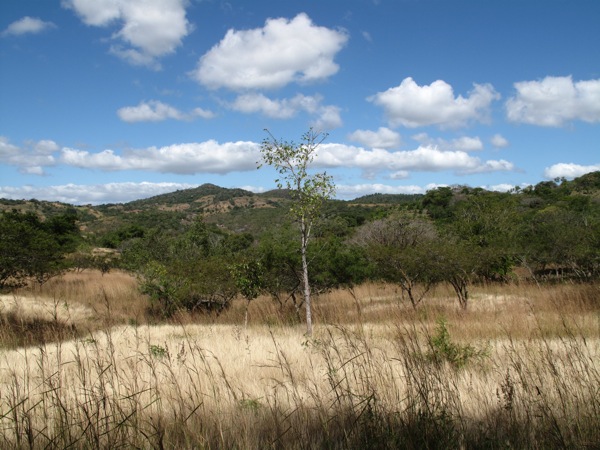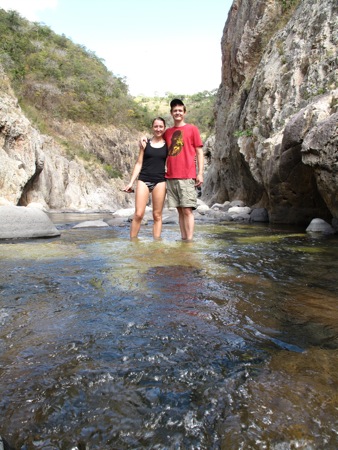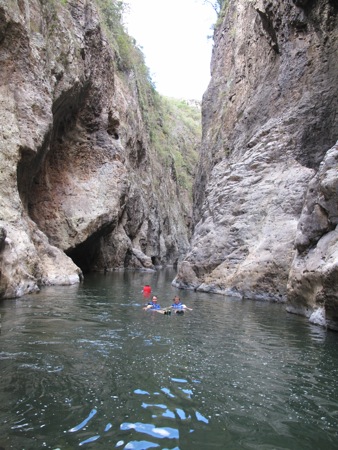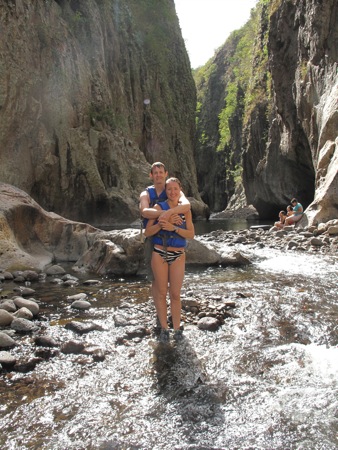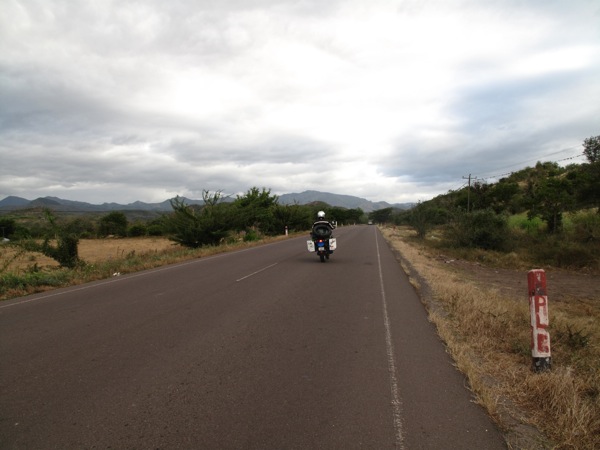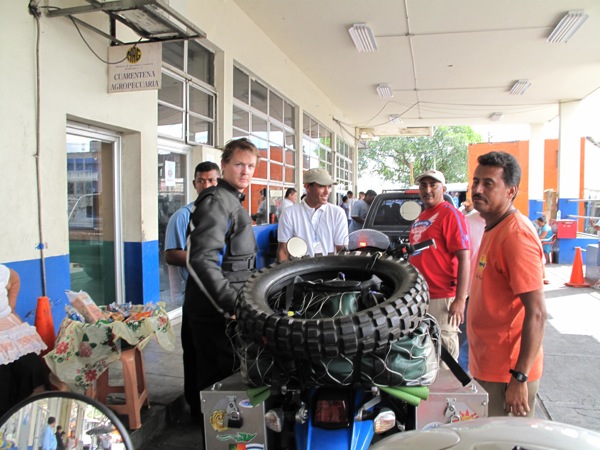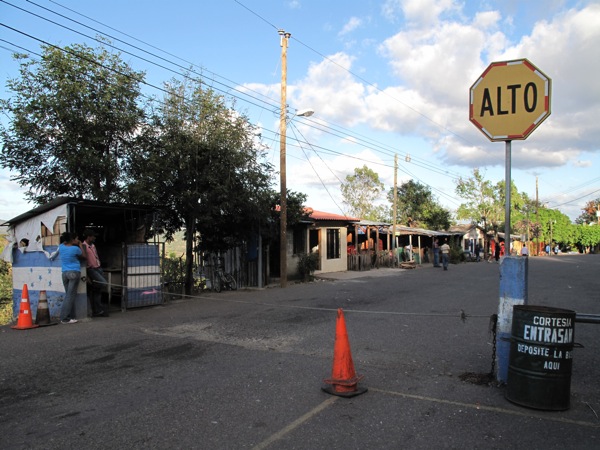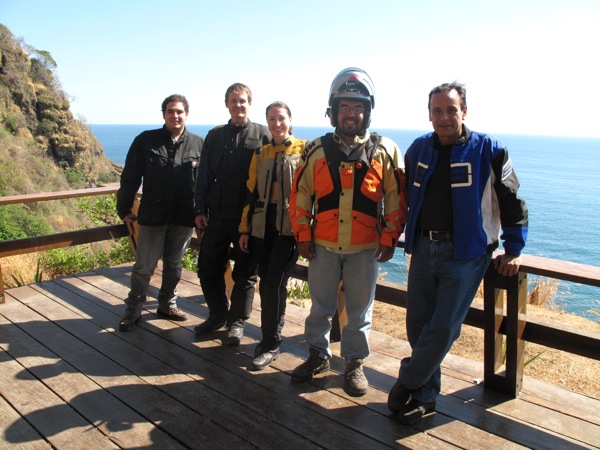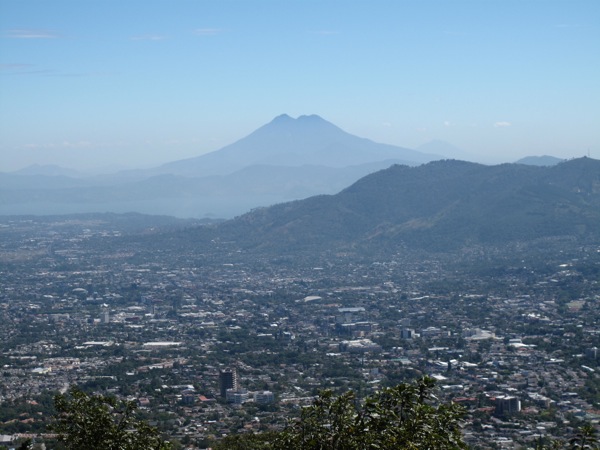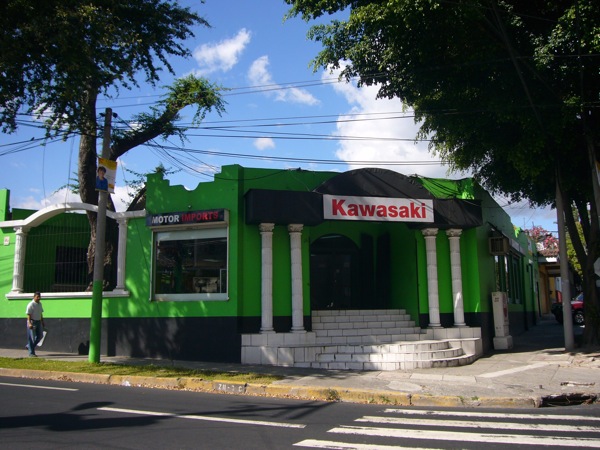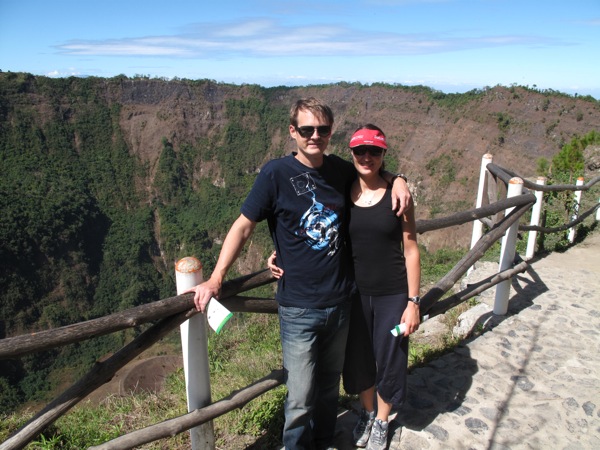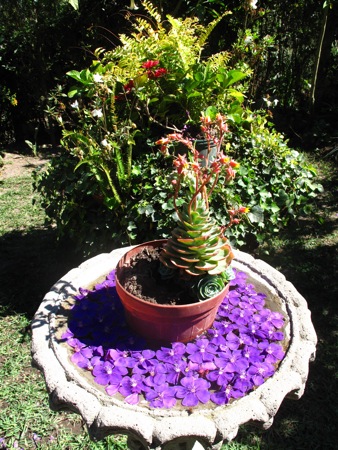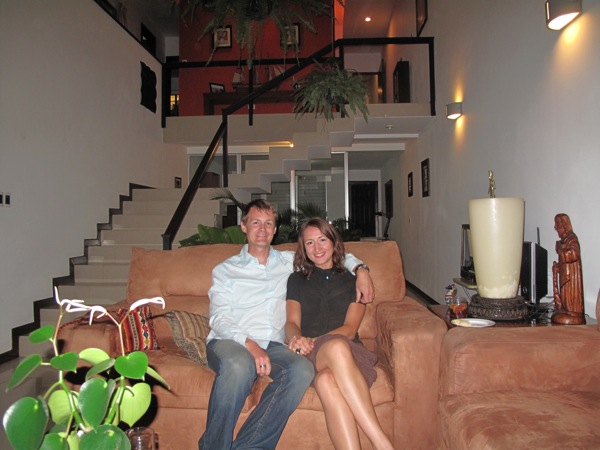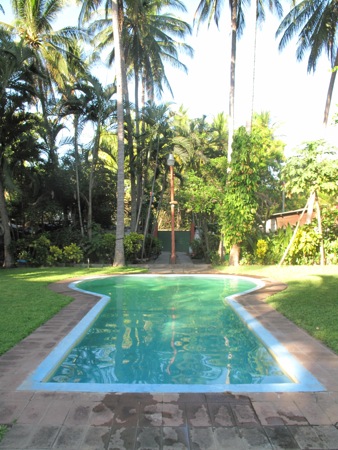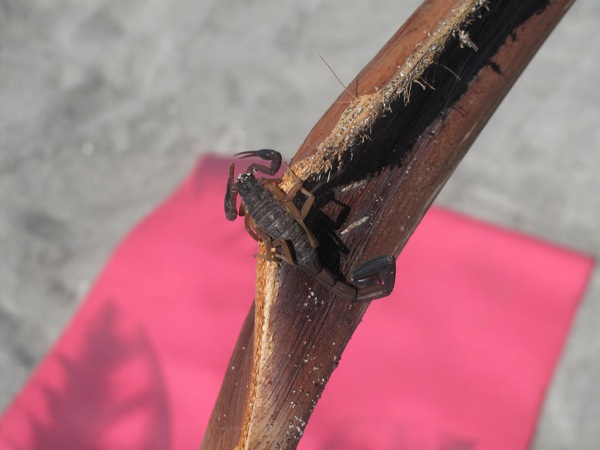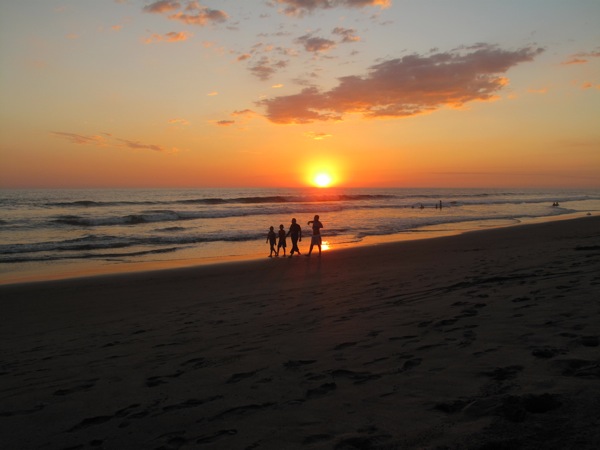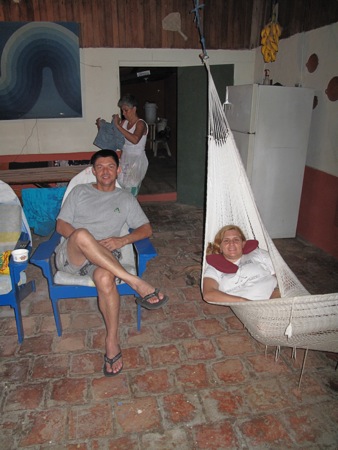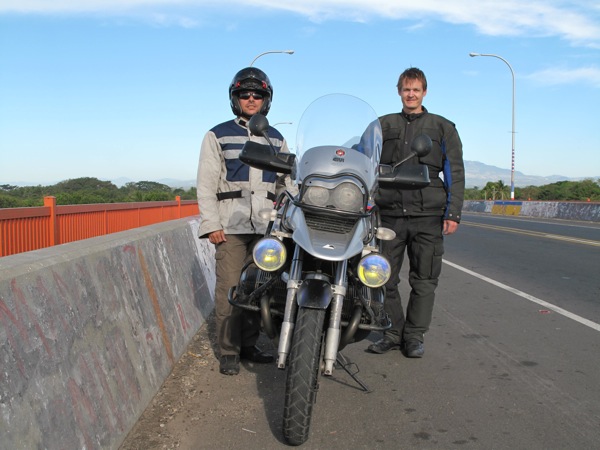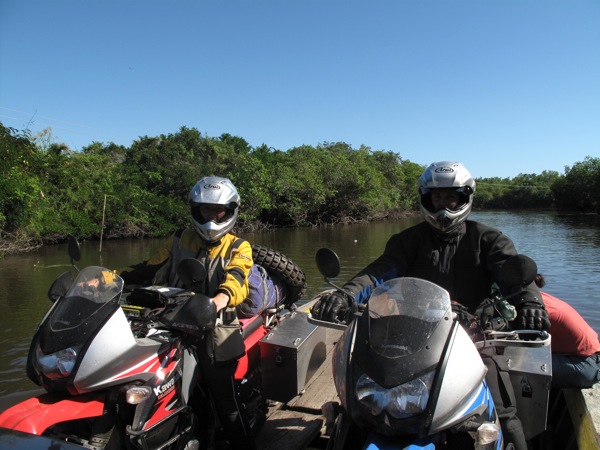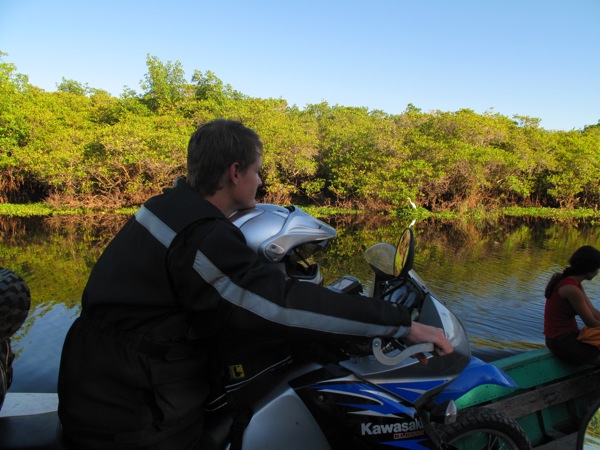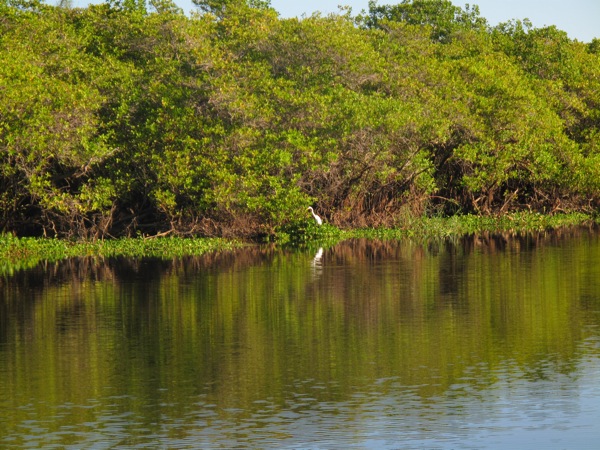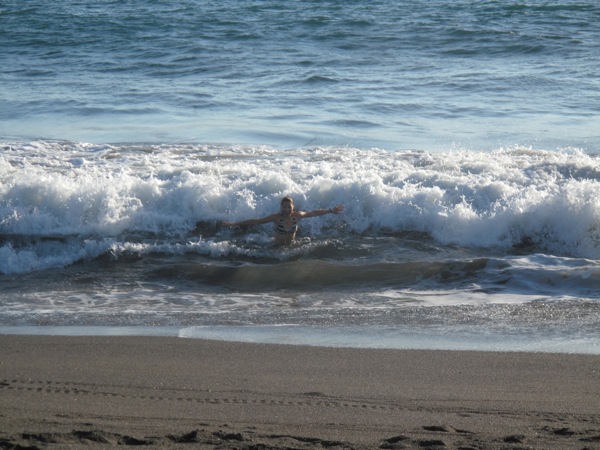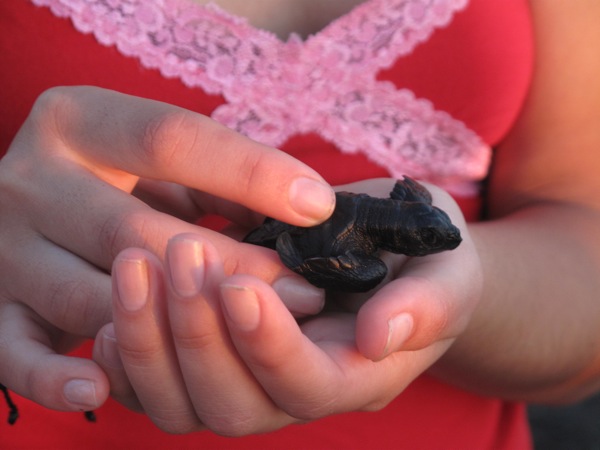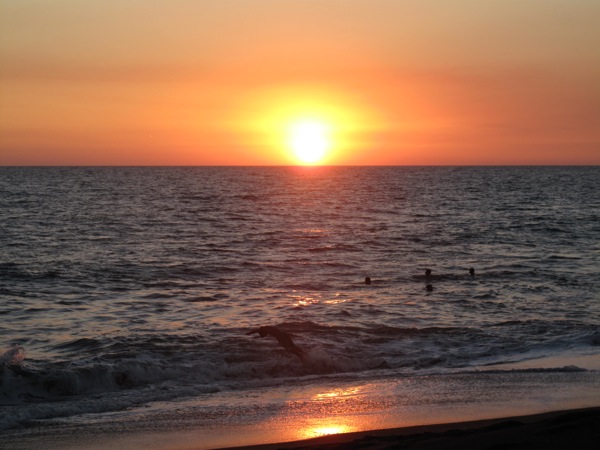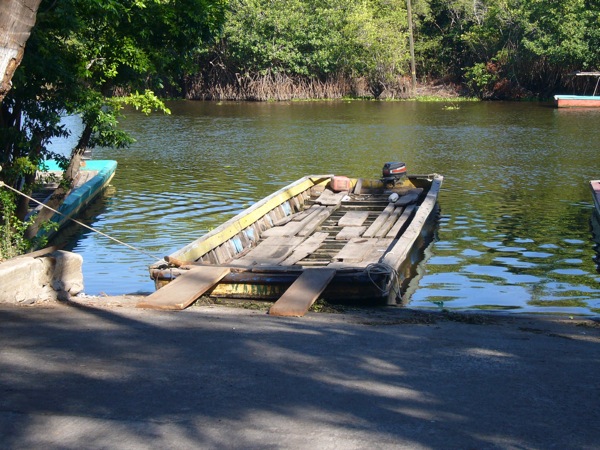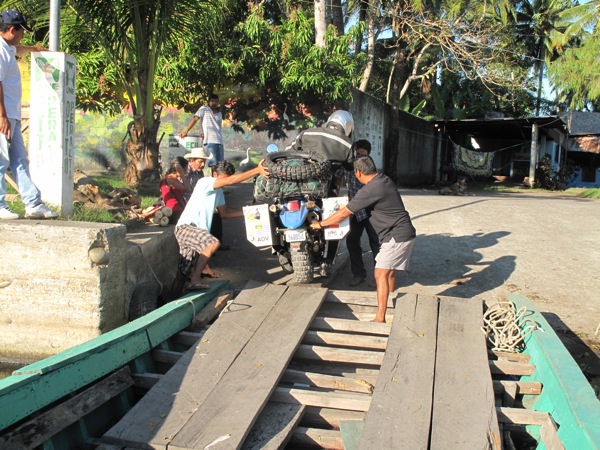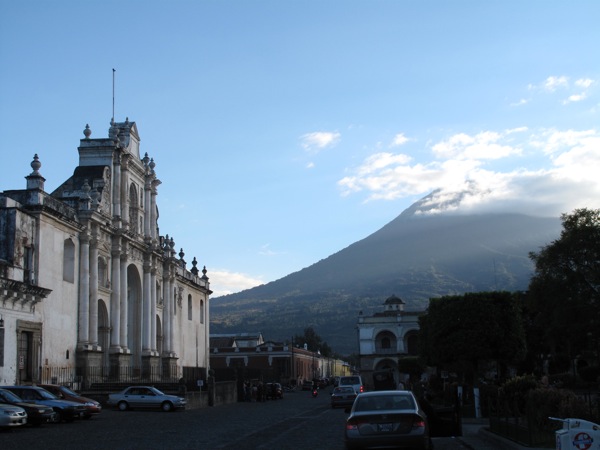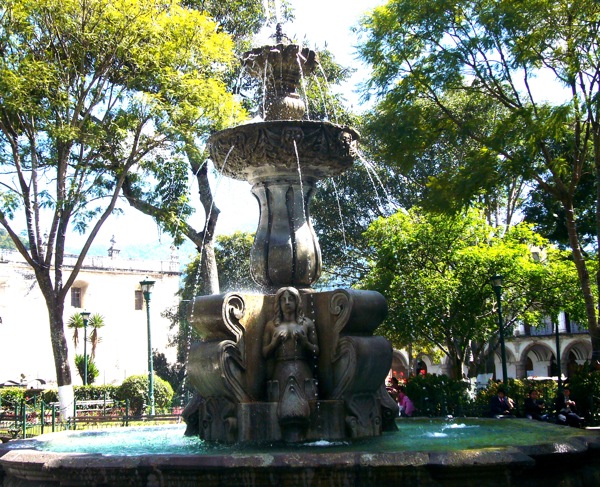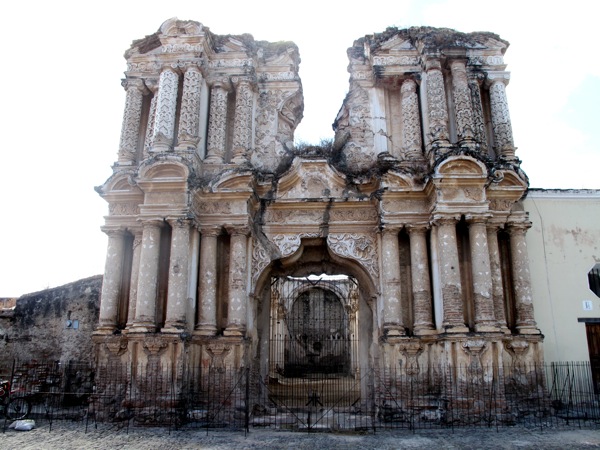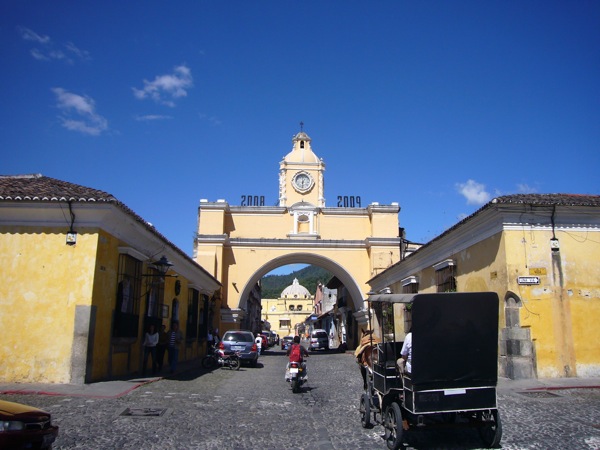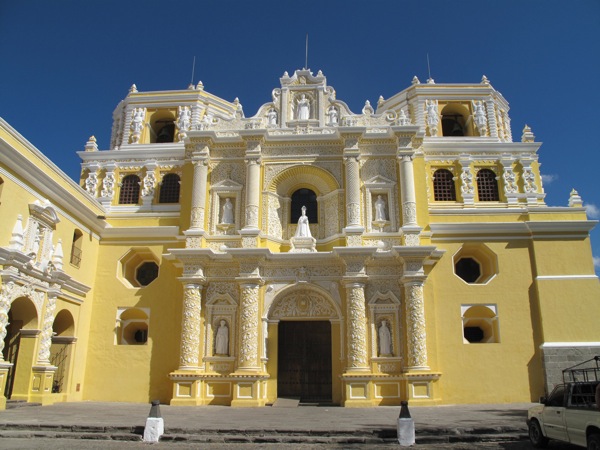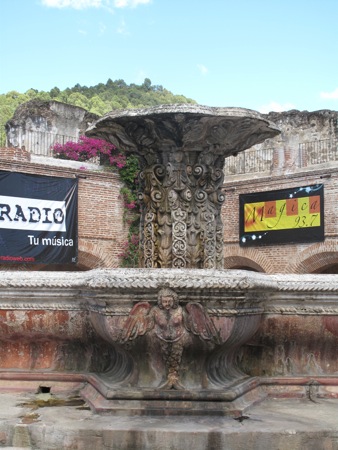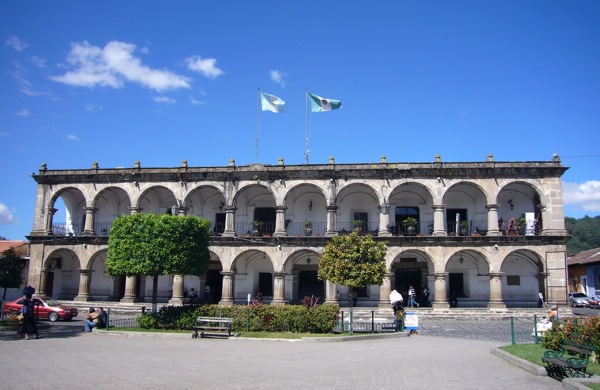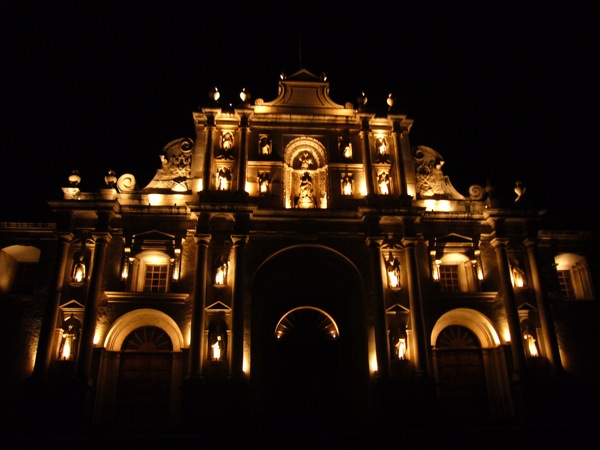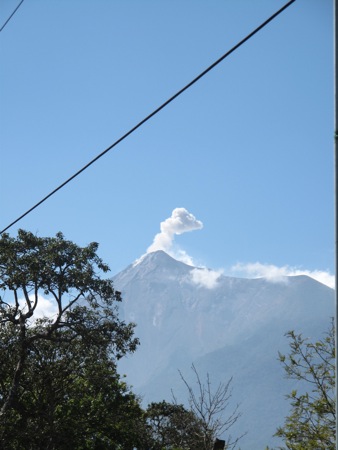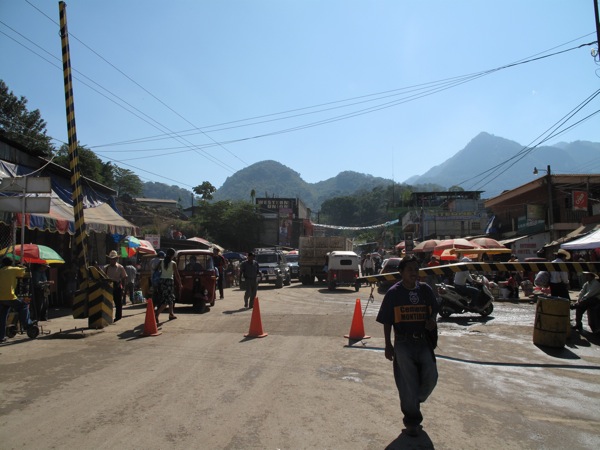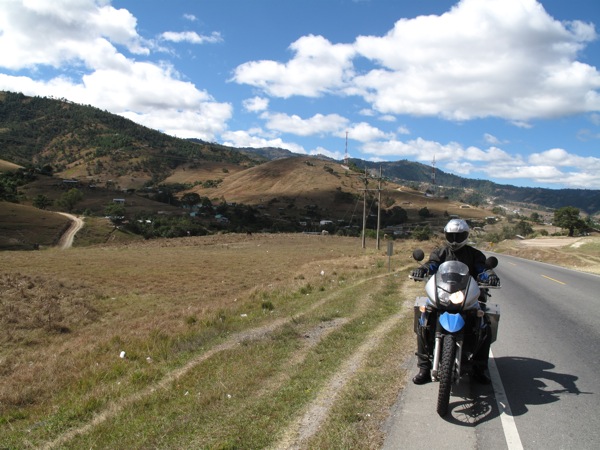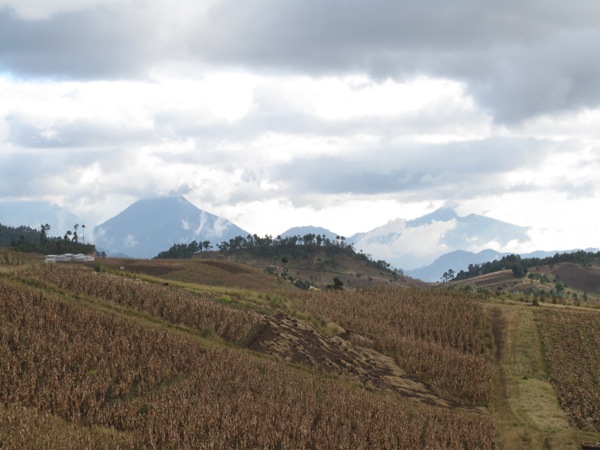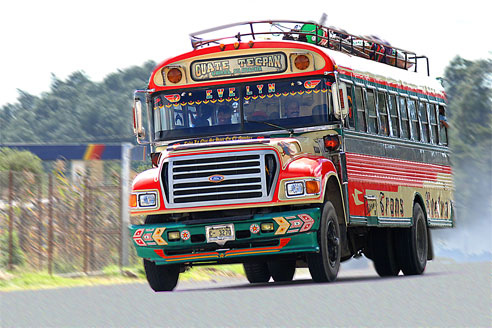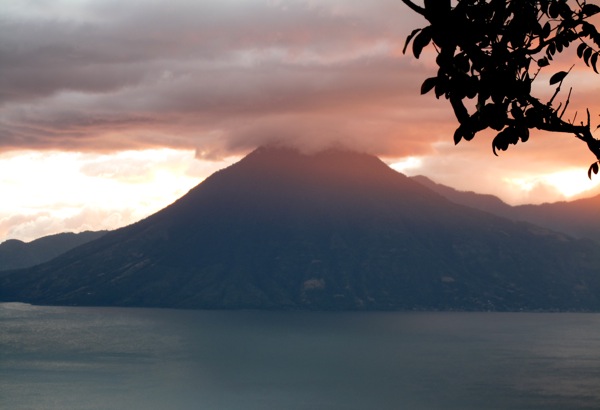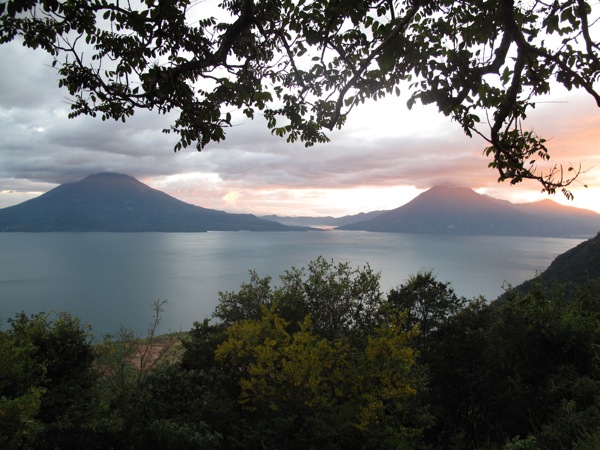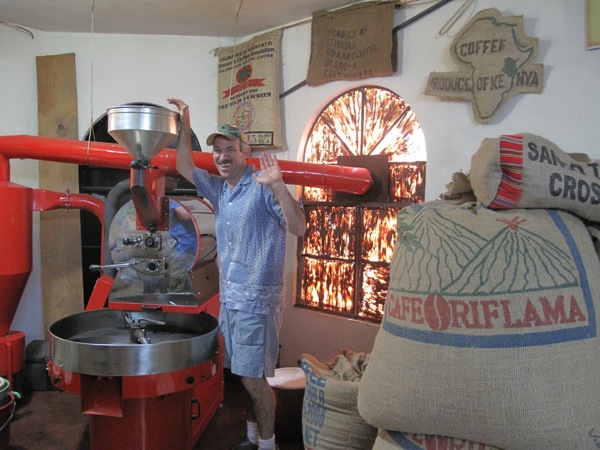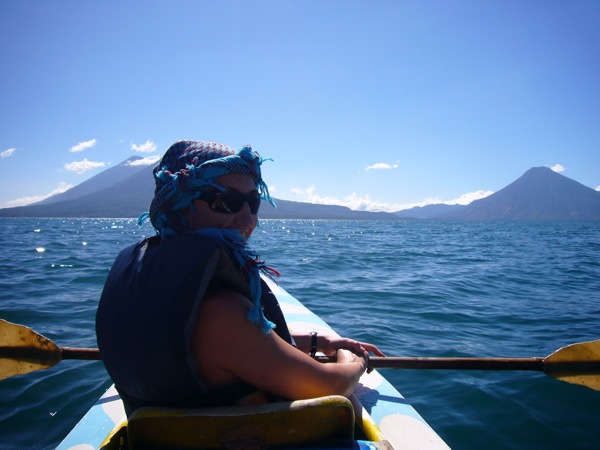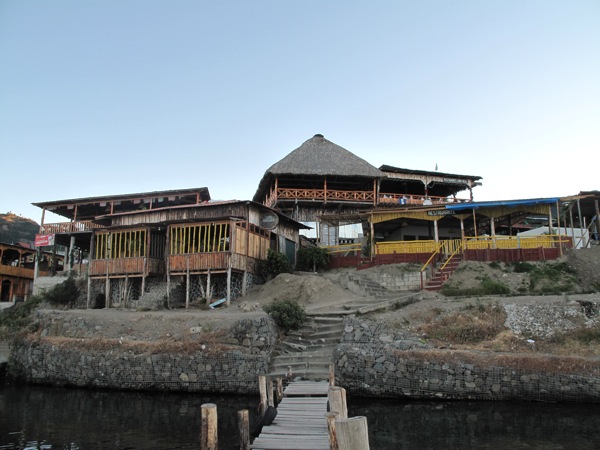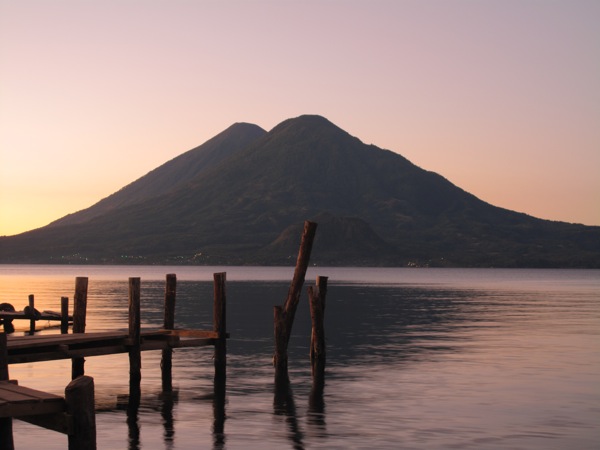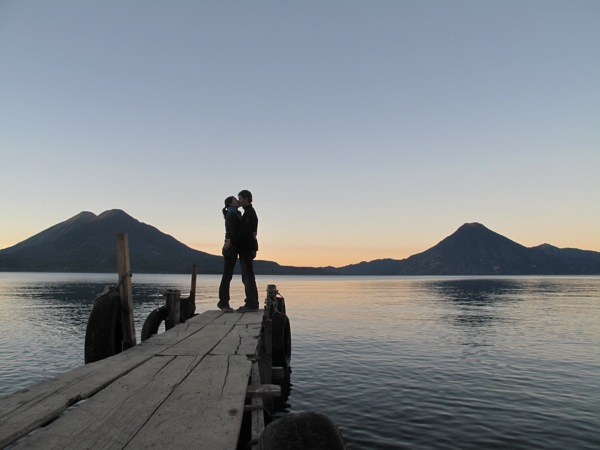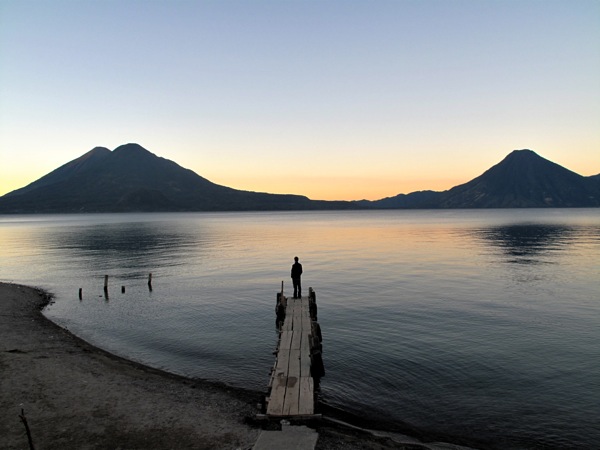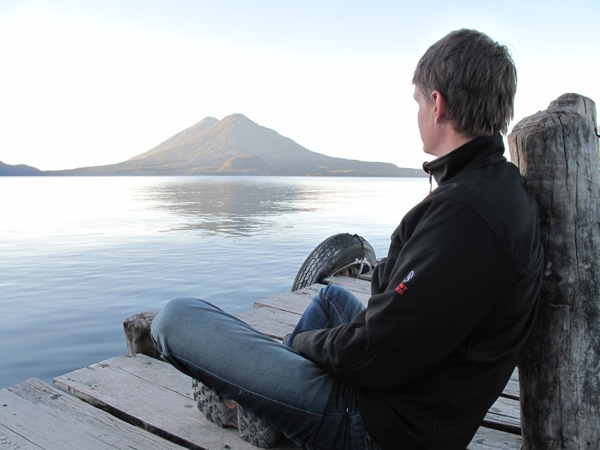Sunday, December 21
The border crossing into El Salvador was tedious, but uneventful. The staff was light on a Sunday morning so the majority of the three hours it took to do the paperwork was waiting in line outside the aduana for the next available agent. I don’t mind so much if the border takes time so long as it is an orderly process. I chatted with a few of the others waiting and met someone from Port Arthur, Texas. He told me he had ridden out Hurricane Ike and while Port Arthur got lucky, he’d never try his luck like that again.
A fellow rider from Adventure Rider, Mario L. had contacted me some time ago, offering to show us around El Salvador if we were going to be riding through. We had originally planned to ride through Honduras, but we couldn’t pass up an offer of local hospitality. We arranged to meet near La Libertad at noon, but the border had taken so much longer than expected we were only a few miles from the border when the clock struck twelve.
Fortunately, there is only one road from our border crossing so we hoped we wouldn’t be too late to run into them. In a nice sweeping right turn to which both Inna and I had flubbed the entry, four riders went past in the other direction led by Mario L. on his booming KTM. Inna and I pulled off and the other did a u-turn. Mario L. pulled off to introduce himself and he was a jolly guy with a great smile. We quickly set off in a line of 6 motorcycles. This was a magnificent welcome to El Salvador which I doubt any other country will able to top. Inna and I both had huge smiles under our helmets.
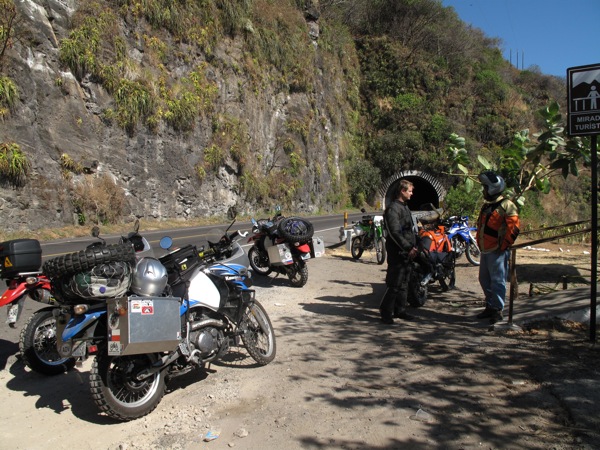
As luck would have it, we had just gotten to the best part of the road. Mario L. led us through the series of five tunnels that were linked with series of sweeping turns along the hillside. We stopped at a viewpoint – imagine that, a country who put viewpoints in their scenic roads! Inna and I were introduced to the others and the names turned out to be easy to remember. There was Mario D., on a red KLR like Inna’s except with a cool El Salvadoran flag on the front fender. Mario L. Jr. was Mario L’s son on a Kawasaki dirt bike. Finally, there was Juan Carlos, who was riding one of the cool Yamaha parallel twin dual sports we are not worthy of receiving in the US.
We resumed our ride along the coast, on our way to meet up with Mario L.’s family and friends at a beach club on Playa Sunzal. We arrived shortly and were introduced to everyone. It was a beautiful beach club and we almost felt a little out of place. However, everyone was extremely friendly and jovial conversation was enjoyed over a nice and much needed lunch. Playa Sunzal is a world famous surf spot and the beach itself was simply beautiful. Inna and I were able to have a quick swim in the ocean before we all suited up to head into the city.
The road from La Libertad to San Salvador is a particularly busy two lane road on a Sunday afternoon as everyone is returning from the beach. These guys rode a little more aggressively than I was used to, passing traffic on the left and sometimes riding up the right shoulder. Inna felt right at home.
Mario L. had arranged a hotel for Inna and I two doors down from the San Salvador Kawasaki dealer. He had also made us an appointment for the next morning as he was on friendly terms with the owner. This was the royal treatment and Inna and I couldn’t believe the hospitality we were being shown from someone I had exchanged a few sentences with over the internet. The hotel was nice, with the rare luxury of wireless internet, and conveniently located a block from the big Galleria shopping mall.
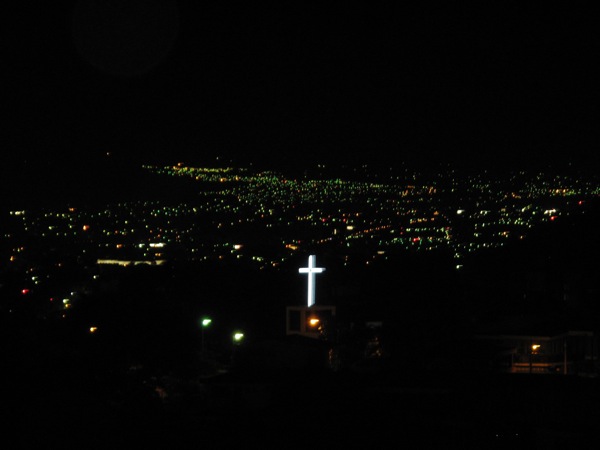
Mario L. left us to clean up, and later Mario D. picked us up at the hotel for dinner and drinks at Mario L.’s home. Mario L. has a beautiful house on a hill in San Salvador with a view of the volcano and all of our new friends from lunch were there. We met Mario L.s beautiful wife Fernanda and were treated to cocktails, our first drink in weeks, along with El Salvadoran papusas. My stomach was still in turmoil but I tried them anyways. They were tasty, if a little greasy, and my appetite was limited under the circumstances. It was a very pleasant evening of good conversation and food. Inna and I were a bit in awe at incredibly gracious hospitality we were being shown as we felt like we were long lost relatives returning to the fold. Sadly Inna and I had the least stamina of the bunch and were the first to retire for the night. It was wonderful to sleep in air conditioning after the misery of the night in Monterrico.
Monday, December 22
We woke up early for our Kawasaki appointment. Mario L. met us at the dealer to make sure everything was going smoothly and to introduce us to the owner, Mike Sullivan. The bikes were set to receive an oil change, new brake pads, and to install the stainless steel brake lines I’d been carrying from Seattle but had never find the time and motivation to install so far. We also replaced a seal on the countershaft on Inna’s bike in hopes that it would stop leaking so much oil.
I still wasn’t feeling well, so I was happy to lay low for most of the day. Having a hotel room door buildings from the dealer was wonderful. Inna and I made a short excursion to the mall to see what it was like, and it was a spacious three story, upscale mall. Sadly, we are weary of tortillas by now, so the palatial food court at the mall with its myriad of cuisines seemed like nirvana. This is very embarrassing to admit, but after weeks of the same flavors and spices, a change was needed.
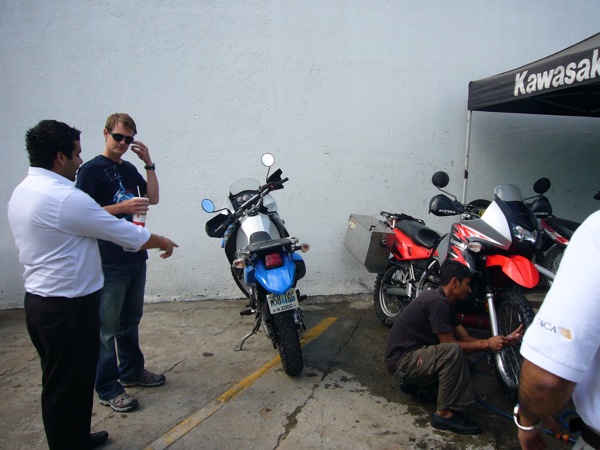
Things didn’t go quite so smoothly at the Kawasaki dealer. Due to a miscommunication, only Inna’s bike had received new brake pads, and the new rear lines on both bikes were installed incorrectly. When they were fixing Inna’s, the young mechanic broke the line at the banjo. This was extremely frustrating and he offered to pay for it, but I just told him to put the original rubber line back on and we’d call it even. The line was worth $50 and there was no way I was going to take that out of some kid’s pocket three days before Christmas. I’ll get a new one when we get home – it’s only the rear brake anyways. In the hurry to reinstall the brake lines on both bikes, they were bled very poorly but I didn’t notice it until later. I will have to address it later as the rear brakes are extremely mushy on both bikes. Fortunately, the front brakes felt great if a bit squeaky at low speed.
I switched from a lighter antibiotic to the sledgehammer of Cipro and started to feel better within hours. Inna and I had a low key evening in the room, enjoying lounging, reading, and catching up on cable news.
Tuesday, December 23
Tuesday Mario L. and Mario Jr. came to the hotel to take us for a drive. We first went up to the volcano. It’s only a short walk to the rim from the parking lot but the altitude provides a good excuse for being lightly winded. The volcano itself is very impressive. You stand on the rim looking down into the crater whose floor lies 560m (1800ft) below the rim. The crater is lined with trees that look miniscule and the only hint of activity is the bulge rising from the ground that wouldn’t look out of place on the moon. A television transmitter rises from the edge and we were all thinking what a great spot it must be for base jumping. The rim provides a great view over El Salvador as several other volcanic peaks loom in the distance.
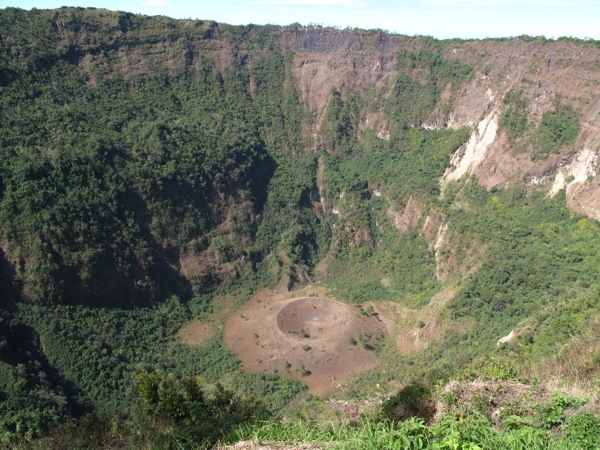
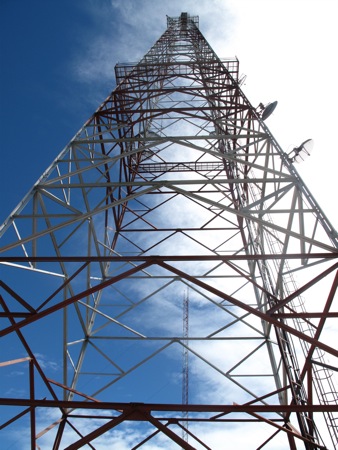
Our next stop was lunch at an eco tour restaurant. Lunch was served on the back patio overlooking the jungle. Many beautiful flowers were in bloom and amongst the many birds a few hummingbirds were hard at work. It was a beautiful scene only enhanced by the delicious food and good company. Mario L. told us of his planned ride to Alaska next summer. This is great news for Inna and I as it gives us an opportunity to return the incredible hospitality.
After lunch Mario took us to see the coffee plantation that has been in his family for 35 years. Neither Inna nor I had ever seen a coffee plant in person, and the coffee was near harvest time. The trees were heavy with ripe red coffee cherries. The plantation had nice guest house set up perfect for barbecuing. The caretakers lived in a house near the guest house. For a working farm, it had surprisingly nice views of San Salvador and it’s amazing that you can farm with a view of a major city.
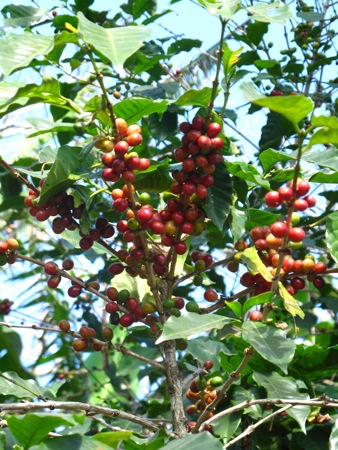
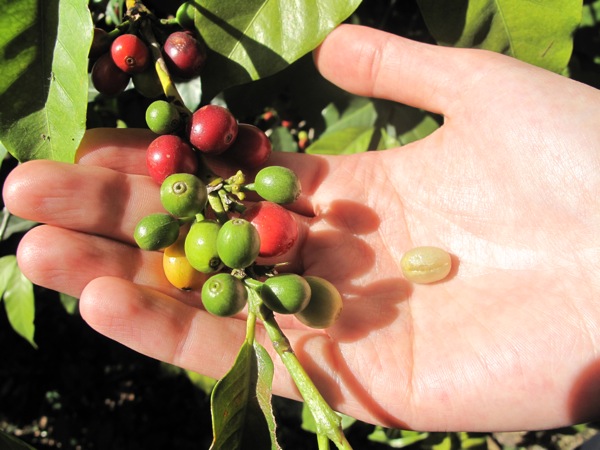
Mario returned us to the hotel for a few hours before Javier picked us up for the party at Juan Carlos’ house that night. Juan Carlos’ is an architect whose talent was on display in the design of his house. It was wonderfully spacious and colorful with a stairway that seemed to have no supports and a skylight. As was typical of our El Salvadoran experience, everyone was extremely gracious to us and we had many laughs with Javier, Mirna, and Patty. I’ve never seen anyone pour a tall glass of Johnny Walker Black on the rocks before, but Javier is a big guy who can drink them like lemonade. Beneath the house was a ping pong table, and Inna gave me a early beat down before we drew even. We had such a good time and so many good conversations at the party, it was hard to believe we had just met these people who had so warmly welcomed us into their holidays. Sadly, as per usual now, Inna and I were the first to wilt and go home to our hotel beds.
Wednesday, December 24
We slept in slightly, but we ready to check out when Mario L. arrived. He and his daughter Fernandita arrived in car to lead us down to Mario D.’s house in Playa San Diego. Mario D. offered us his beach house for a few days and we could not pass on the offe. It was another amazing display of hospitality – the day of Christmas Eve – Mario L. takes the time to drive down from San Salvador to La Libertad so we could go grocery shopping, then to Playa San Diego to get us settled for our stay before driving back to San Salvador to spend Christmas Eve with his family.
Christmas in El Salvador is traditionally celebrated on Christmas Eve with the family. Fireworks are set off from about 7 pm onward, culminating with the big finale at the stroke of midnight. Hugs are exchanged, and then Christmas turkey dinner is served. I doubt there are many early risers on Christmas day in El Salvador.
Our Christmas Eve was near perfect. Mario D.’s house was a lovely bungalow a short path from the beach. It had two small houses, an outdoor living room, kitchen, and a pool. Inna cooked us a huge salad and a marinated herb chicken fried in a pan. The chicken in El Salvador is so much juicer and tastier than the chicken we get at home, and after weeks of eating out, the home cooked meal was divine. We were so happy with the food and the wine we were in bed watching Wall-E by 10 pm. I remember being woken up by the loud explosions and knowing midnight had arrived and that it was Christmas.
Thursday, December 25
We slept in for the first time what felt like ages. Inna cooked us a great breakfast and we were both going to be sad to be leaving a kitchen behind. We hit the beach after breakfast. We found our first scorpion of the trip clinging to our beach bag. Inna is nicely tanned now, but I still look like the ghost of Seattle past. It definitely didn’t feel like Christmas. Our friends and family were thousands of miles away, and we were surrounded by beaches and fireworks.
As is the tradition in El Salvador, the beaches were crowded as all the families head down for the day. Mario D., his wife Carlena, and their family arrived in the afternoon. The fourth Mario of our El Salvador experience was Mario D.’s son Mario. Mario D. and Carlena continued the high standard of hospitality. Inna made up a salad and some eggplant, while Mario and Carlena provided the hot dogs for our communal dinner.
Inna and I really enjoyed the company of Mario and Carlena. Mario owns a security consulting business while Carlena is a logistics and project manager for multimillion dollar development projects, all while raising a family of four. Both of them had spent significant time in United States earlier in their lives. The kids don’t fool around with their trips to the beach – they brought a TV, a DVD player, and an Xbox with 2 guitars for Guitar Hero contests.
Friday, December 26
Inna and I had planned to leave Friday morning for Honduras, but were easily persuaded by Mario to stay another day. Inna went to the beach while Carlena and her daughters took me into La Libertad to see the market along the pier. It was another lounging afternoon for us and we even managed to get some time in on Mario’s giant trampoline. We had a late lunch/early dinner bbq of chicken and beef. Inna and I made it an early night while the family watched a movie.
Saturday, December 27
We got up early to make our run through Honduras. Mario D. got up early with us and gave us an escort for the first hour down to the big bridge. It was a sad farewell for us, to Mario in particular and our experience in El Salvador in general. Mario L., Mario D., and their family and friends were so incredibly hospitable and gracious to us. They took so much time out for us during the holiday week usually reserved for family time. Inna and I were just strangers posting on a website and these people took us into their homes and treated us like family. By the time we left, everyone felt like old friends and Inna and I were both sad to say goodbye. It had been a very humbling experience for us and it is an inspiration for us to pass on the hospitality to others when we return home to Seattle.
Mario L, Fernanda, Mario D., Carlena, Juan Carlos, Javier, Mirna, & Patty – thank you so much for your kindness and good company. We will remember El Salvador as one of the real highlights of our trip.
